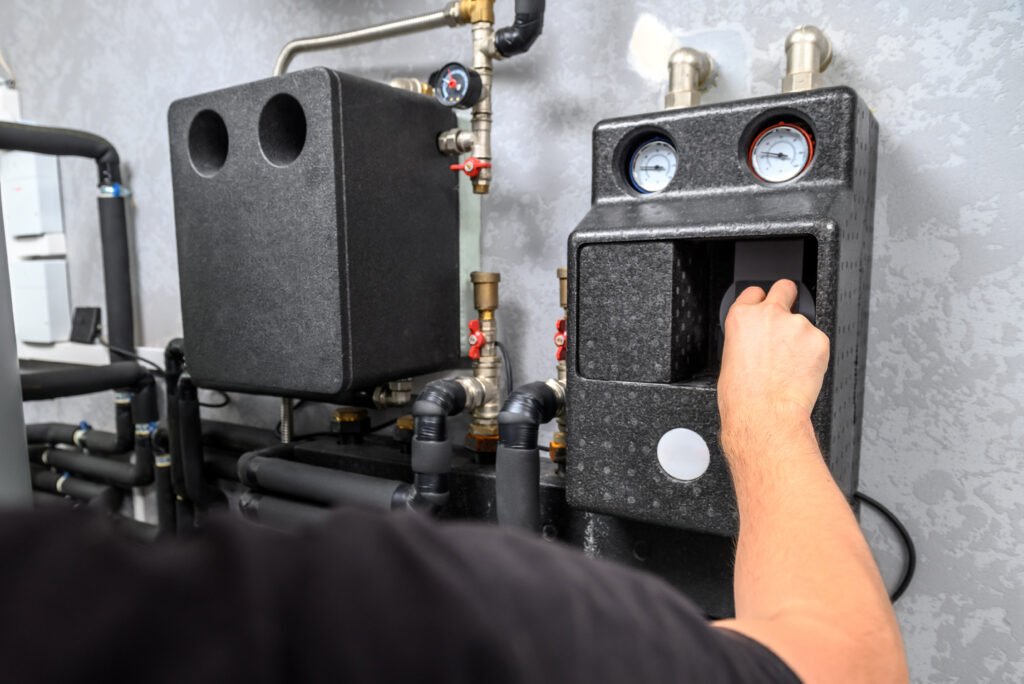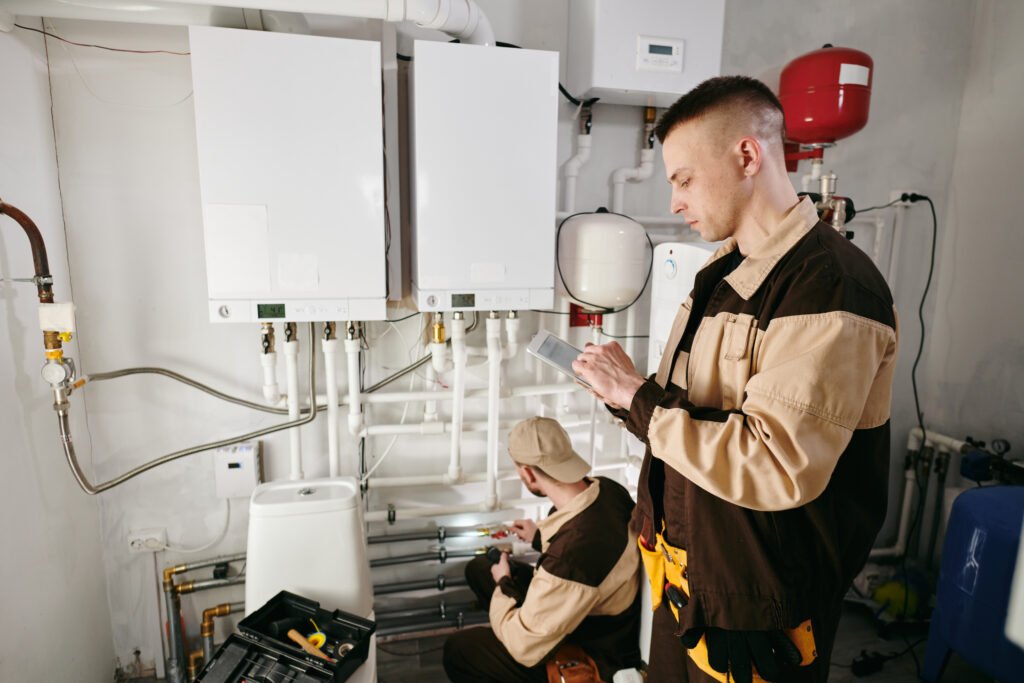Furnace installation isn’t something you should rush or take lightly. Whether you’re upgrading your old unit or setting up heating in a new build, how you handle the installation process directly impacts your comfort, energy bills, and safety.
After working with countless homeowners and business clients over the years, we’ve seen where things go wrong, and more importantly, where they go right.
Below are the top 10 furnace installation tips every property owner should know whether you’re doing it for the first time or replacing an old system.

Start with the Right Furnace for Your Property
Some people jump into furnace installation thinking any unit will do, as long as it heats. But factors like square footage, insulation, number of rooms, and climate zone matter.
Gas, electric, and oil are the primary types, with gas furnace installation being the most common (and usually the most cost-effective if you have access to natural gas).
That said, electric furnace installation is cleaner and may make more sense in some regions or where gas isn’t easily available.
Know What You’re Really Paying For
We’ve all seen it as a shiny ad boasting “low furnace installation cost” only for the final bill to tell a different story.
There’s more to the cost of a new furnace and installation than just the unit. Labor charges, ductwork repairs or modifications, venting requirements, permits, thermostats, and electrical upgrades, they all add up.
Typical cost of a new gas furnace installed might run anywhere from $3,000 to $7,500 depending on size and efficiency level. Electric furnace installation can be slightly lower but may cost more over time due to electricity rates.
Go for a High Efficiency Furnace (Even If It Costs More)
It’s tempting to save upfront. But long-term savings are where the real value lies.
Opting for a high efficiency furnace installation means you’ll use less fuel and see lower monthly bills. Look for AFUE ratings of 90% or higher that means 90 cents of every fuel dollar is turned into heat.
Yes, these models can be $1,000–$2,000 more than standard ones. But over a 10–15 year lifespan? You’ll more than make that back.
And in many areas, energy-efficient units qualify for rebates or tax incentives. Win-win.
Size Matters, A Lot
This can’t be stressed enough. If the furnace is too small, it will constantly run and still fail to keep you warm. Too big, and you’ll waste energy while creating temperature swings throughout the house.
A good furnace installation contractor will perform a calculation. It considers your home’s size, insulation levels, windows, local climate, and more.
If someone tries to size your unit based on a quick glance or what your neighbor has? That’s not who you want doing your furnace installation.
Hire Local and Licensed Professionals
We’ve seen it time and time again, homeowners who thought they’d save money with a friend-of-a-friend end up paying twice when things go wrong.
Stick with licensed local furnace installers who know your area’s codes, understand local climate needs, and have real-world experience. If you’re managing a bigger space, especially commercial property, make sure they have experience with commercial furnace installation too.
Always check reviews, ask for references, and make sure they’re insured.
Don’t Forget the Filter Rack
When installing furnace systems, many contractors just leave the old filter rack in place. But a warped or poorly fitted rack can allow unfiltered air into the system, reducing efficiency and even damaging components over time.
Whenever possible, have a new rack fitted or ensure the existing one is cleaned, sealed, and aligned properly. Installing a filter rack on a furnace may sound minor, but it makes a big difference in system performance.
Learn How to Install Furnace Filter (The Right Way)
You’d be surprised how many filters are installed backwards – yes, backwards.
So if you’re wondering how to install a furnace filter, here’s the rule: the arrow printed on the filter should point toward the furnace. This ensures proper airflow and keeps your system running efficiently.
It’s a small detail, but essential. And speaking of filters change them every 1–3 months, depending on your usage and whether you have pets or allergies.
How Long Does It Take to Install a Furnace?
Good question. For most homes, the full furnace installation service takes 6 to 10 hours. But don’t take this as gospel.
Older homes may need duct modifications or electrical work. Some projects, especially commercial furnace installation, can take multiple days. Always ask your installer how long it takes to install a furnace in your specific situation.
Plan accordingly so you’re not left without heat when you need it most.
Review the Warranty, Both Equipment and Labor
Most new furnaces come with a 10-year warranty. But that’s just the equipment.
Ask your contractor what their furnace installation service covers in terms of workmanship. A reputable pro will stand by their labor for at least a year, if not more.
Also, keep records. If something goes wrong down the line, having proof of professional installation helps with warranty claims.

Always Do a Post-Installation Test Run
You’d think this would be automatic, but we’ve seen some contractors skip it. Don’t let that happen.
Before your installer leaves, make sure they run a full system test. That includes verifying airflow, thermostat responsiveness, safety sensors, gas line connections, and carbon monoxide levels.
This final step ensures your furnace and installation are safe, efficient, and ready to handle the cold ahead.
Conclusion:
Furnace installation sets the stage for years of comfort and reliability. But it’s not just about the unit. It’s about the process, the installer, the planning, and yes even the filter rack. Make smart decisions now, and you’ll thank yourself every winter from here on out.
We at Temperature Zone Corp offer professional furnace installation services tailored to your space, energy needs, and budget. Whether it’s residential or commercial furnace installation, our certified technicians ensure a safe, efficient, and lasting setup.
Frequently Asked Questions
How much is a new furnace installed?
The cost of new furnace and installation typically falls between $3,000 and $7,500. Prices vary based on size, type (gas vs. electric), and home requirements.
Can I install a furnace myself?
Unless you’re licensed and experienced, DIY furnace installation is a serious risk. Improper installation can lead to carbon monoxide leaks, fires, and voided warranties.
How do I know if a furnace installer is trustworthy?
Look for licensed and insured furnace installation companies with strong reviews, transparent pricing, and experience with your specific furnace type.
Is it worth going for a high efficiency furnace?
Absolutely. A high efficiency furnace installation can significantly reduce monthly energy bills and may qualify for rebates or tax credits.
What’s the biggest mistake to avoid?
Installing the wrong size furnace is a costly error. Always insist on a load calculation before you commit to installing furnace systems.